#Cosmic Consciousness (Quotes)
Explore tagged Tumblr posts
Quote
Our universe was created to perpetuate creation, it was not created to perpetuate consumption.
Jennifer Sodini
#quotes#Jennifer Sodini#thepersonalwords#literature#life quotes#prose#lit#spilled ink#consciousness#cosmic-consciousness#inspirational#inspirational-quotes#spiritual#spirituality#the-universe
33 notes
·
View notes
Text
I am God
I am sovereign
I am free
#gsf#cosmic trinity#law of one#unity#consciousness#universe#spirituality#affirmations#mantra#divine#divine love#christ consciousness#awakening#5D#new earth#lemuria#mindfulness#meditation#quote#mine
14 notes
·
View notes
Text
Oneness...Cosmos...Know Thyself...
Knowing that words come to us from the vibrations of the universe should help us to see that we are all one. Going about our life with this understanding is completely different from going about life thinking only of ourself. When we’ve worried ourself over the immediate future its important to broaden our perspective and see that the sky is all one and that we are all one with the sky and the…

View On WordPress
#2021 Gratitude (Poetry by Mynzah)#Books#Cosmic Consciousness (Quotes)#Eternity (Quotes)#God#God (Quote)#God Head (Quotes)#Godseeds (Quote)#Gratitude (Quotes)#Health#Humanity#Humanity (Quotes)#Innerstanding#Know Thyself (Quotes)#Knowledge (Quotes)#Kundalini#Kundalini (Quotes)#Life Quotes#Light Beings#Lightbody (Quotes)#Masaru Emoto#Mynzah#Near Death Experience (Quotes)#Oneness (Quote)#Oneness (Quotes)#Out of Body Experience (Quote)#Quotes#Self-Realization#Self-Realization (Quotes)#Service to Others (Quotes)
5 notes
·
View notes
Text
“The Self is really a collection of several distinct neural networks, all existing simultaneously within the landscape of your brain. So if there are different versions of yourself, floating around inside your skull, which one is the real you?”
The thing is, all of them are you. But beneath it all, the real self is the one who puts on the various masks and costumes, while remaining whole and perfect beyond your perception. The task becomes to integrate all the parts of yourself, by accepting and embracing that all of them are versions of you — even the ones that contradict themselves.
Reality really is what you perceive it to be, your subjective worldview is intricately influenced by the objective reality, which in turn is how you continue to create your own. You are the world within the world. And you are here to fully embody all that you are, be shamelessly authentic in order to align your reality to the one you truly desire — the reality that only you, with all your unique traits and experiences could create.
Authenticity is accepting your multidimensional self — that who you are cannot be labelled and fit into distinct categories.. When you are a microcosm of the whole universe in this tiny human form.
You get to choose who you choose to show up as. This time around, choose to show up as your whole divinely magnificent Self.
#quote is from the show perception on Disney… i love neuroscience OMG#reality is thought perception#its all in the mind#vagus nerve neurons connect to the heart#heart is the seat of your soul — your intuition#hearts electromagnetic field is how we connect to the world around us and take in energetic communication#its a biofeedback system.. what you store in your heart and mind influences the world around you and the world around you influences you#SPIRIT SCIENCE#the divine cosmic play of consciousness#mental health#spirituality#christ consciousness
14 notes
·
View notes
Text
Awakening Beyond Illusion: Cultivating Inner Peace in a World of Change
We live in a world that seems more uncertain by the day. The news flashes across our screens with stories of conflict, rising debt, division, and suffering. It’s easy to feel overwhelmed, as if the world is caught in a web of confusion and delusion. Yet, in the midst of this storm, there lies a deeper truth—one that has been whispered through the ages by the sages, prophets, and teachers of many…
#Advaita Vedanta#awakening consciousness#Buddha and Mara#Buddhism and suffering#collective consciousness#cosmic play#global healing#global well-being#healing consciousness#Inner peace#inner transformation#interfaith spirituality#Love and compassion#Maya and Lila#Meditation practice#mindfulness teachings#Mystical Teachings#Mysticism#Perennial wisdom#personal enlightenment#Rumi quotes#Self-Realization#Spiritual Awakening#spiritual growth#spiritual harmony#transcend illusion#world peace through spirituality
0 notes
Text
Existence theory #2
In my last post, we talk about Shiv-Shakti. in this post I am introducing another terminology - Vishnu.
What is Vishnu ? Its a combination of two Sanskrit words - Vishwa + Anu, which means world's molecule or universal or cosmic molecule.
This is the form that manages and governs our existence.
To be continued...
R. R. S.
#quotes#existence#consciousness#conscious thought#self thoughts#life#reality#molecules#particles#cosmic realizations#cosmic consciousness#universe
1 note
·
View note
Text
Your passions, your goals, your dreams—they’re not just yours.
They’re a cosmic collaboration.
Your dreams are dreaming you back.
#affirmation#alignment#note to self#positivity#law of attraction#law of assumption#reminders#quote#assumption#loving#send assumptions#goals#passions#cosmos#cosmic collaboration#cosmic consciousness#cosmic girls#manifestation#manifesting#loa success#loa tumblr#manifest
1 note
·
View note
Text

2014 Tumblr WYA
#2014 tumblr#bring back tumblr#FYP#artists on tumblr#aesthetic#quotes#lyrics#beautiful#beautiful quote#old tumblr#spirtuality#love#romance#cosmic#space#5d consciousness#vantablack#oblivion#stardust#follow me#follow#follow my ig#tumblr girls#girl#instagram#actor#influencers
1 note
·
View note
Text
RANDOM ASTRO TAKES #3

People born with Neptune in 1H can have heights in their career that not so much people can reaching. That’s because they embodies possibly an ideal at a moment of their life, physically or mentally.
The ban of TikTok during the Venus/Saturn conjunction in Pisces square Jupiter in Gemini is really a return to reality for content creators who scattered the attention span of their followers with a boost of dopamine. It’s a drug abuse that everyone should fight internally. I seriously think that the South Node in Virgo opposite a conjunction North Node/Neptune in Pisces ruler of Saturn makes a lot of people delusional about the responsibilities of each in the destruction of species, the global warming, dumbification of society, that’s terrible for our future.

If you’re lost to interpret outer planets, using their discovery chart can helping you to be more precise on what influence they have, the big three of each :
Uranus, Scorpio Rising/Pisces Sun/Scorpio Moon
Neptune, Cancer Rising/Virgo Sun/Scorpio Moon
Pluto, Leo rising/Aquarius Sun/Scorpio Moon.
The three discovery charts have a Scorpio Moon, that symbolizes the transformation of astrology after each discovery, the emotional depths when conflicts are bringing up to interpreting the planets and all the collective psychology behind them. If you want to knowing better outer planets, start by knowing better Scorpio Moon and her patterns.
Moon and Mars fall in mutual reception bc they’re similar under these signs, reactive and instinctively emotional, intuitively assertive and self destructive patterns. This is our animal spirit, the fuel that feeds your soul. Aquarius (human) has Cancer (instincts) in 6H (animals) where Mars rejoices and Scorpio (depths) in 10H (public image).
The alchemical transmutation is based on the 7 seven planets who are in analogy with 7 metals, like it’s’ so Kali Yuga coded.

Moon and Sun domiciles and exaltation signs follow each others like the light and shadow in the celestial course. It’s a cosmic dance of the duality who makes one in a beautiful artistic cosmos. Aries, Taurus, Cancer and Leo are the brightest of the zodiac, they radiate charisma.
Aries : a pioneer, strong athlete, big brain who learn quickly, the spark who light up the room
Taurus : the warming fireplace who wraps the room in its tender warmth
Cancer/Leo : the midnight sweet summer that gives you memories for life, the beach, vacations, evenings
Mercury makes the link btw the two Moon signs and receive two sextile from the Sun signs, a very alchemist thing.. 😌

It's interesting to note that the golden age of oil began in 1859, when Uranus was in Taurus sextile Neptune in Pisces. 166 years later for theirs returns, resources are running out after numerous crises and the future without them is not yet prepared worldwide. But when oil was starting to be used massively it was in 1920 when Saturn was in Virgo, the health of the Earth had started to be impacted massively by our consumption.
With Pluto angular to his derivative sign, Scorpio. I think we gonna experiments a lot more of natural catastrophes on earth, like hurricanes and tsunamis after seism. Taurus is in derivative 4H of Pluto that is in derivative 4H of his sign, he’s gonna destroying all the capitalism.
Mars dominant people are so aware of themselves that they can expand their awareness to the world and universe like Buddha, but David Chalmers is also a good example. His quotes on the consciousness are untouchable.




#astrology#zodiac#astro notes#witchcraft#astro observations#birth chart#astrotakes#astro tumblr#random astro observations#astrology placements#astro placements
237 notes
·
View notes
Text
Ketu Dominant Themes — 𝐍𝐚𝐤𝐬𝐡𝐚𝐭𝐫𝐚 𝐎𝐛𝐬𝐞𝐫𝐯𝐚𝐭𝐢𝐨𝐧 𝐒𝐞𝐫𝐢𝐞𝐬 (part 1) 𝐩𝐚𝐫𝐭 𝐨𝐟 𝟑
disclaimer: spoilers for all movies or shows mentioned.
the warnings: mentions of drug abuse, sexual violence, self-harm, genocide, mental disorders/illnesses, cannibalism and self amputation.
The most interesting theme within all the Ketu nakshatras is one that is unexpected, as Ketu is commonly associated with concepts of disconnection or isolation from society as a whole — given its frequent link to the 12th house. However, it is more about the interactions with the unseen forces within society than anything else. The 12th house also represents the collective consciousness and all the interconnected energies that come with it, which we all become deeply influenced by. Ashwini is the most sensitive Ketu nakshatra, as it is easily consumes and absorbs by these 12th house energies through the native, often leading to chaos and loneliness.

Ashwini Nakshatra embodies nothingness, the oldest energy in the universe. It exists in the space before actualized creation and after the rise of awareness that emerges from nothingness (or the cosmic void). It is very fitting that this is the first nakshatra, but it should also be considered the last Ketu nakshatra. The focus here is on the spirit's evolution. The energy found in this nakshatra is as undeveloped as it is chaotic, which is why evolution needs to take place — and this usually involves extremely harsh forces to tame it. In Ashwini, there is confusion or a lack of self-awareness regarding one's own identity. I am going to use some films as examples to explore this point.
First, I'll use the most typical Ketu-coded character; Ashwini Moon Christian Bale's Patrick Bateman in American Psycho. This film follows an investment banker who revels in the wealthy excesses of his superficial lifestyle, surrounded by others who do the same. His life is empty, mostly revolving around getting into exclusive restaurants, indulging in designer suits, and maintaining a meticulous morning routine. There is a general pressure to conform, and the Ashwini native is highly sensitive to these societal energies, which they absorb — driving them to compete and, eventually, to go too far. For Patrick Bateman, it’s no longer about conformity; it becomes an obsession, and these pressures push him into homicidal tendencies as an outlet. This film perfectly encapsulates modern-day consumerism, and it is, of course, an Ashwini native who descends into madness as a result of the empty, superficial yuppie culture he is subjected to.
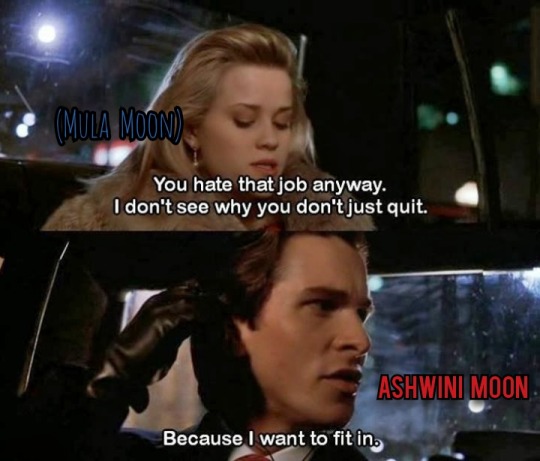
Nothing can fill the emptiness inside him, and he knows it. This crippling, painful awareness continuously fuels his violent self-hatred and his hatred toward others. This is why he remains trapped in a cycle of loneliness, surrounded by the same narcissistic, self-absorbed individuals who perpetuate this soulless culture.
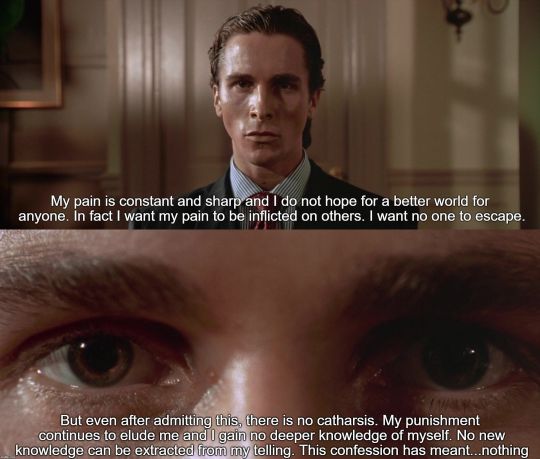
The movie was adapted from the book with the same name, written by Mula Moon Bret Easton Ellis whose own experiences inspired the book "American Psycho".
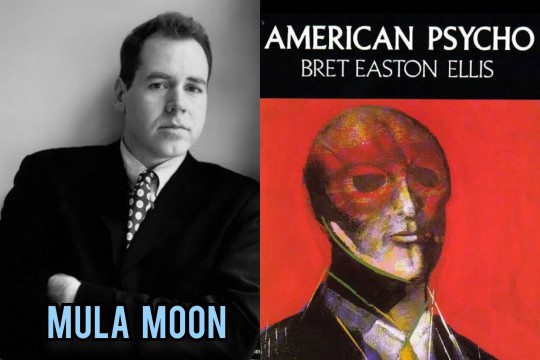
Quote from an interview; OregonLive (2010);
"[Patrick Bateman] did not come out of me sitting down and wanting to write a grand sweeping indictment of yuppie culture. It initiated because my own isolation and alienation at a point in my life. I was living like Patrick Bateman. I was slipping into a consumerist kind of void that was supposed to give me confidence and make me feel good about myself but just made me feel worse and worse and worse about myself. That is where the tension of 'American Psycho' came from... It came from a much more personal place."
-- Mula Moon Bret Easton Ellis
Now, onto the movie "Fight Club", which was directed by Magha Sun David Fincher, and stars Magha Sun Edward Norton and Mula Sun Brad Pitt.
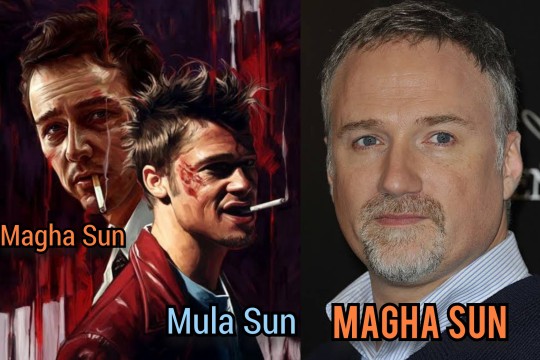
The most highlighted character from this film, played by Brad Pitt, is Tyler Durden, who plans on making a revolution to destroy the hyper-capitalistic, materialistic superficial culture that we saw destroy Patrick Bateman from the inside in "American Psycho".
(video - 🎧)
Of course, just like Ashwini Moon Patrick Bateman took his obsessive consumerism too far; Mula Sun Tyler Durden lays on the opposite spectrum, aiming to destroy modern society by blowing up all credit card companies and ruining the world's economy. Mula is related to destruction as it is ruled by Nirriti, the goddess of destruction. The oppressive forces that weigh on this Mula character, Tyler Durden, causes him into a spiral for freedom (9H), using extremities and acts of terrorism to be rid of ego/society. Whereas Ashwini, having no solid identity and just being undeveloped in nature, is more likely to conform; but so long as Ketu is there, there will always be an emptiness in the ambitious pursuit of things. Ashwini can grant excess wealth and fame, but with no inner fulfillment or balance, you see characters like Patrick Bateman. Or Daniel Plainview from "There Will Be Blood".
A movie directed by Paul Thomas Anderson who has Ketu in Magha, and stars Ashwini Moon, Mula Ascendant Daniel Day Lewis who portrays Daniel Plainview. Plainview is more Ashwini, as he is an extremely ambitious, capitalistic and competitive oilman.

His pursuit for wealth and power leads him to personal loneliness, isolation and emptiness, we see how Ketuvians become so drained by the energies they absorb in the pursuit of things. Similarly to Patrick Bateman, he not only hates others but himself as well and wishes for no one to succeed in life.

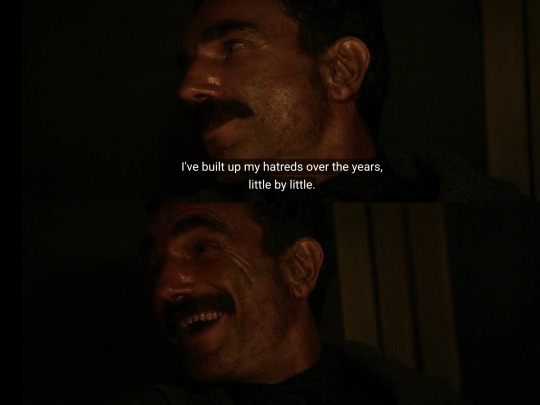
His primal competitiveness and self-loathing even drive away his only family, his only child. His adult son means to do his own oilrig business and cuts his partnership with him. But Plainview's unchecked ambition shows that even after attaining success and power, he literally goes ahead to disown his own son as he considers him competition now. And now he extends the same hatred he has for others to him. Further isolating himself; this validating his deep sense of loneliness that was always there with his self-loathing.

The film ends in an Ashwini fashion; in which Plainview goes into a psychotic meltdown and murders someone who he has had a long stewing hatred for.
(YouTube clip by me - 🎧)
youtube
I wanted to provide a brilliant video from the YouTuber "The Vile Eye", who explored the dark nature of this character; because it perfectly illustrates Ashwini nakshatra in a twisted way, especially in how Aries in this segment is influenced by Ketu forces. Everything about this character is every Aries stereotype you can think of from the top of your head, but Ketu exaggerates it to the point of extremity and tragedy.
youtube
Amazing video for anyone who wants to understand Ashwini at its extreme which can manifest in real life of course.
The series "Peaky Blinders" stars Ashwini Moon Cillian Murphy whose character faces moral dilemmas, as his relentless pursuit of power contributes to his moral ambiguity.
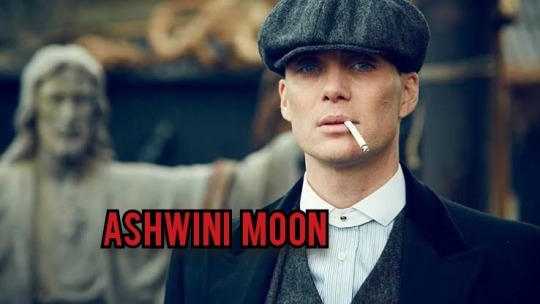
His ruthless ambition to become the most powerful in the criminal underworld is something I couldn't help but relate it back to Ashwini's drive & competitiveness.
The movie "Scarface" stars Ashwini Sun Al Pacino who plays Tony Montana. And fun fact, Tony Montana is loosely based and inspired by the real-life figure, Al Capone, who had Ashwini Moon.
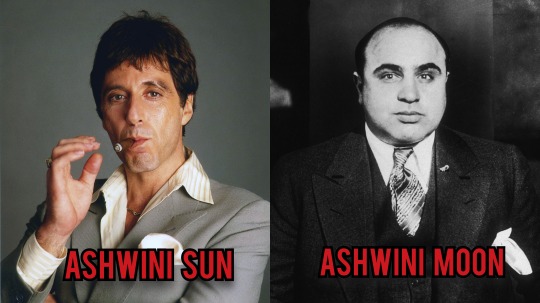
Both Tony Montana and Al Capone had unchecked ambitions and an unrelenting desire for power. In Ashwini, extreme power can be attained, and we saw how Tony Montana quickly rose to it (as Ashwini is the Star of Transport and it is associated with Shidhra Vyapani Shakti which translates to 'The Power to Quickly Reach Things'). Similarly, Al Capone was also driven by the desire for power, and he attained it.
Like Daniel Plainview in "There Will Be Blood", Tony Montana starts to experience isolation after all of his achievements. His chaotic behaviour contributes to his alienation, and he starts to feel intensifying loneliness, which seems to be a theme with this nakshatra. And this film also ends in Ashwini fashion; with absolute chaos, the psychotic unraveling of Tony and of course death.
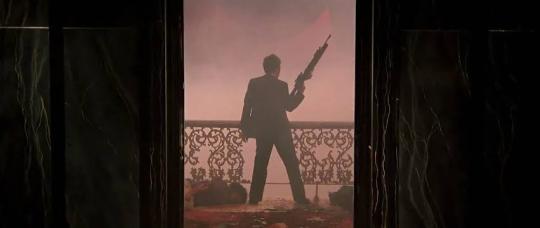
I wanted to also add in the movie "Nightcrawler" which stars Mula Sun Jake Gyllenhaal who plays a character willing to go to the extreme lengths for success and personal achievement, to the point of exploiting others, unconcerned with ethical boundaries.

He has a distorted view of success and has an unchecked, ruthless ambition. He is also a socially isolated character, behaving inappropriately as he is disconnected from social norms. In his obsessive & relentless pursuit of success, he is devoid of humanity. Had to mention this film because these themes are not exclusive to Ashwini.
But as I did mention, Mula natives are more likely to be aware of societal pressures and these natives often feel deeply disturbed by them. In the film "Falling Down", Mula Moon Michael Douglas plays a character who has become disillusioned and is now aware of the pressures and oppression caused by the modern-day life. This movie is literally directed by Magha Sun Joel Schumacher.
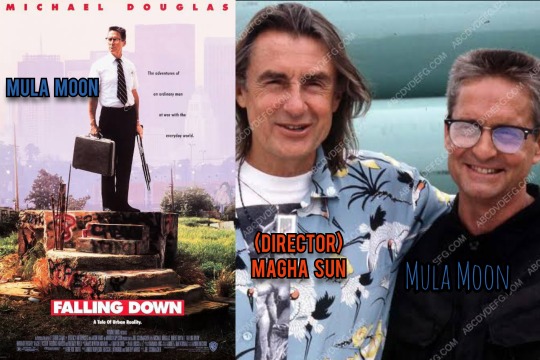
He confronts many issues such as homelessness and crime, which are heavily rooted in the greedy, capitalistic system of modern society. But he becomes violent and chaotic himself, going into a descent to madness (from absorbing the energies felt by the collective who feel the weight of these oppressive forces within society). This movie deals with the consequences of unchecked rage, a theme shared in all Ketu nakshatras.
The film "Taxi Driver", which stars Magha Sun Robert De Niro and is directed by Magha Ascendant Martin Scorsese, depicts a man who suffers from extreme loneliness, alienation from society, and struggles with existential crisis. The film explores social decay; such as social disparities, the disillusionment of our main character to society's ills, crime, poverty etc. He goes into a descent into vigilantism, using violence as a catharsis which is a common thing for these Ketu nakshatras (mainly Magha and Mula as it looks at societal frustrations and the emptiness in life/modern culture).
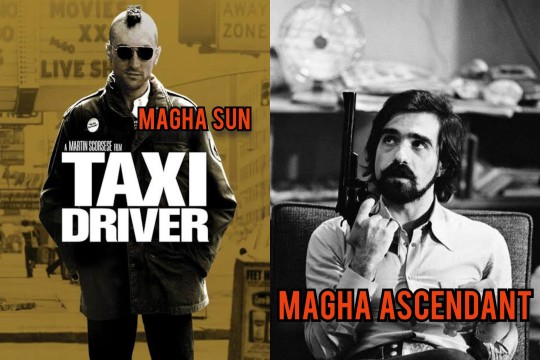
The character also suffers from a possible case of untreated mental illness, and insomnia — and this seems to be a theme with all Ketu nakshatras in general.
Another film where the main character suffers from extreme insomnia is "The Machinist", starring Ashwini Moon Christian Bale whose character's insomnia and untreated mental illness literally contribute to his isolation and alienation.
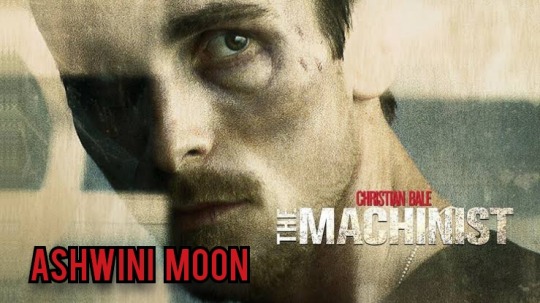
And the film "Fight Club", in which Magha Sun Edward Norton plays an insomniac character who has dissociative identity disorder. And his split personality is interestingly played by Mula Sun Brad Pitt.
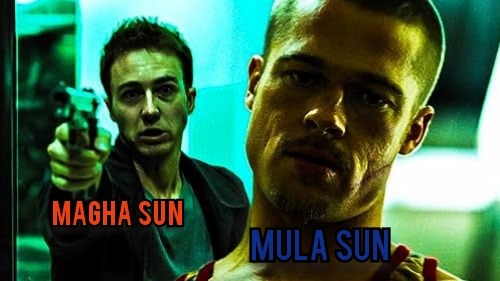
Then the film "Insomnia", directed by Ketu in Magha Christopher Nolan, starring Ashwini Sun Al Pacino who plays an insomniac detective who faces some mental challenges.

There is a spiritual belief about insomnia which suggests there may be a disturbance in one's spirit; unresolved issues that have been long reppressed may be linked to an imbalance of energy within the body. This imbalance causes restlessness and mental problems. This idea aligns with Ketu and the 12th house, which deal with the unconscious — particularly deep-rooted traumas and the ways in which they affect us and those around us. It isn’t just about traumas; it can also stem from the repression of internal suffering caused by loneliness or external pressures. We see this with Patrick Bateman, whose only outlet is literal murder, or Tyler Durden's "revolutionary" fight club, which causes more destruction around him as planned. Both characters violently act out from these unaddressed, decaying energies within themselves and within society.
The series "Sharp Objects", directed by Magha Moon Jean-Marc Vallé, mostly deals with family traumas, but also shows how those traumas and unresolved energies literally cause death and chaos around them.
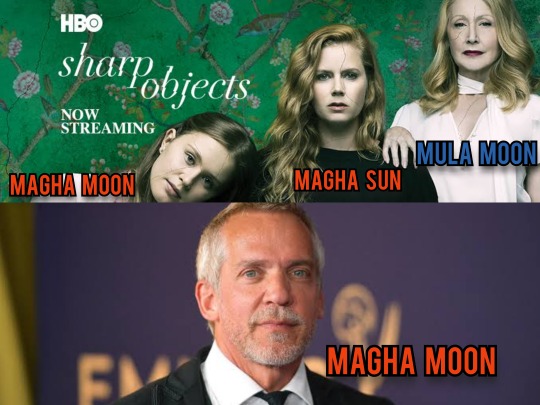
Camille Preaker, played by Magha Sun Amy Adams, is deeply traumatized and troubled. She has a history of self-harm and bears many scars on her body; her self-destructive behaviour is a coping mechanism for the trauma she experienced in her youth (sexual violence by a group of boys and witnessing the slow, preventable death of her sister). Then we have her younger half-sister Amma, played by Magha Moon Eliza Scanlen, who has a hidden dark side shaped by the family’s troubled history and generational trauma. By the end of the series, we discover that Amma is the killer responsible for the violent murders that have shocked the townspeople of Wind Gap. Amma is behind all the gruesome deaths of the girls whose teeth were removed.
While Camille’s coping mechanism involves cutting herself as self-punishment for the guilt she harbours from her sister’s death, Amma literally commits homicidal acts. This reflects just how damaged and complex their trauma is, as well as the toxicity of the community they grew up in. Their mother, played by Mula Moon Patricia Clarkson, has Munchausen syndrome and is responsible for the death of her oldest daughter. Camille witnessed her sister’s suffering and death, viewing her mother as a monster — and now sees her little sister as an extension of her mother.
This series is an excellent example of how unchecked personal trauma can impact others, especially those who are uninvolved. It also shows how much destruction can be caused, as seen with Amma killing other girls as an outlet — similar to Patrick Bateman's. This is why I now realize how wrong I was about Ketu. Ketu is not necessarily about isolating from society. In relation to society, Ketu represents the unaddressed, rotting energies within it, always tying back to individuals’ personal and generational traumas. It makes sense that Magha relates to ancestral roots and the origins of oneself, including the origins of one’s trauma.
Now onto the film "Nocturnal Animals", which is directed by Magha Sun Tom Ford, stars Magha Sun Amy Adams and Mula Sun Jake Gyllenhaal.
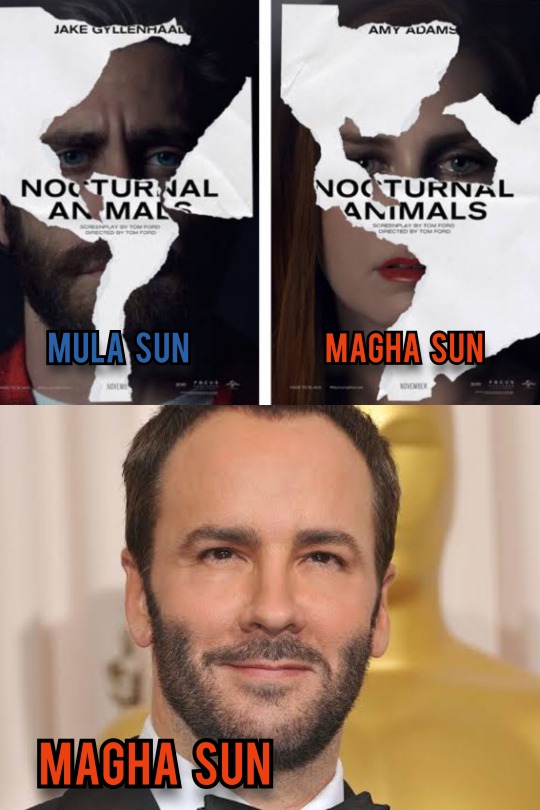
Amy Adams plays Susan, a successful art gallery owner. She receives a manuscript for a novel called Nocturnal Animals sent to her by her ex-husband Edward, played by Jake Gyllenhaal. The book is extremely violent and tragic, but it turns out to be a symbolic reflection of their relationship and marriage, tying into Ketu themes of unresolved trauma and getting to the roots of it. The book forces Susan to confront how much her actions hurt Edward.
The movie focuses on confronting one's past and demonstrates how trauma continues to shape the lives of those involved. It also shows Susan still has unresolved issues, evident in her repulsed reactions to the extreme parts of the novel.
The movies "Split" and "Glass", stars two Ashwini Suns, Anya Taylor Joy and James McAvoy. McAvoy's character, Kevin, has dissociative personality disorder and these different personalities exist to keep him safe. His trauma is so extreme and deeply painful that it manifested into the creation of The Beast, his most dangerous and superhuman personality. Three kidnapped girls are prey to The Beast as they end up being devoured by it but only one survives — and that's Anya Taylor Joy's character, Casey.
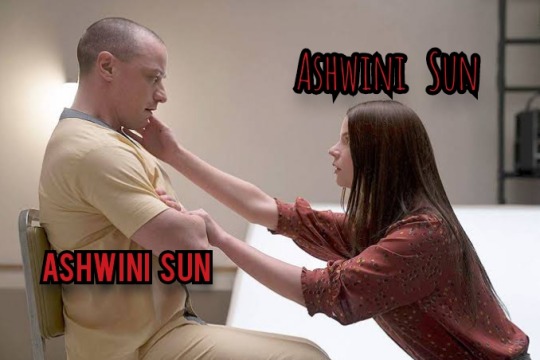
The reason why she doesn't fall victim is because she, too, has suffered extreme trauma and her resilience through it is what creates her immediate connection with Kevin. It is when The Beast sees her scars that he calls her pure, implying that those who have been damaged are the ones who are truly evolved.
(YouTube clip by me - 🎧)
youtube
Also, "Split" is another example of how deeply repressed energies and traumas of one can ruin everything around them and victimize those close to the Ketuvians (usually uninvolved people's lives being violently taken; "Split", "Sharp Objects", "American Psycho", "Falling Down" etc.).
Ashwini Moon Zendaya in the series "Euphoria" plays a character, Rue, who has been through a significant amount of trauma, including the passing of her father. She uses self-destructive ways to cope with her deep emotional pain and grief, very similarly to Magha Sun Amy Adams's character in "Sharp Objects". Rue uses drugs to numb herself from her harsh realities. There is a moment in the series in which she has a chaotic meltdown.
(YouTube clip by me - 🎧)
youtube
Something I now understand with Ashwini is how explosive, volatile and scary its ungrounded energy can be — exactly why I'd commonly associate it with hysterical meltdowns which can lead to accidental or unplanned homicidal acts or other forms of harm/self-harm. This scene of Rue is vaguely taking me back to Ashwini Moon Christian Bale's spiraling and meltdowns in "American Psycho".
(YouTube clip by me - 🎧)
youtube
Ketu, especially with Magha, seems to cause erratic behaviours when its natives aren't purified of their long-accumulated baggage in their unconsciousness — exactly why the 8th house is also ruled by Ketu, as Scorpio shares this particular theme. As long as there is deep disturbance and imbalance in the body, there is no rest for the soul – even for future incarnations to come.
But now, I want to touch on the senseless harshness of Ketu. Remember, this energy embodies the eternal, sucking void. Mula nakshatra relates to the center of the cosmic void and delves straight into its roots. Ashwini has already risen from it, while Mula is centering itself back into it. Mula is where we seek an awakening to the truth behind reality. What lies on the other side of the cosmic void?
Truth is sought in Mula; but it seems in Ashwini nakshatra, it is understood that chaos and nothing is the absolute truth of reality. There is no inherent meaning to anything, which may sound nihilistic, but it is precisely what makes life beautiful.
In the film The Pianist, written and directed by Magha Sun Roman Polanski and starring Ashwini Sun Adrien Brody, the story begins on a warm note with a well-put-together family and a handsome, talented Ashwini man who dreams of being a pianist. However, things take a drastic turn.
We witness a once bright-eyed man transform into a shell of his former self after enduring harrowing events. The events continue to worsen, growing more tragic until there is no longer even a sliver of hope. The majority of the film is filled with despair, senseless cruelty, and the slow annihilation of the protagonist’s soul.

I've never watched a film more Ketuvian than this — surrounded by genocide, death, and complete isolation, consumed by one's own lonely misery. One moment, you think a character might somehow make it out alive because they have the conviction and drive to survive, but the film immediately takes that hope away as they helplessly die. You think the protagonist might finally see some light, and the film even provides brief moments of comfort, but it ultimately shows how everything stays horrific.
There are no answers to any prayers, as suffering is ongoing. This tone creates another layer of entrapment, and you watch as the character resigns himself to letting life do whatever it wants to him, trapped in a world where he is helpless. With Ketu, you come to realize there was never any security at all.
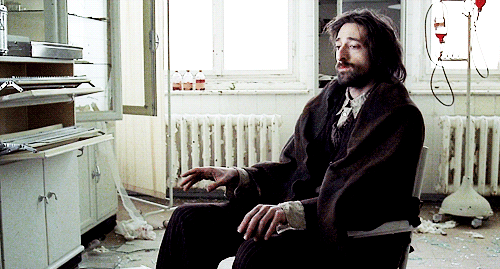
But his survival at the end makes you question why he even went through that to begin with. There was no lesson to be learned. Why did his friends and family die, but not him? In the end, he became the successful pianist he had dreamed of from the beginning. He was exceptionally talented from the start; these events took everything from him except his passion for the piano.
What he went through was senseless, as Ketu has no prime motivation. Saturn will push you through the worst so that you can reach a level where you can attain all of your reaped rewards, but Ketu doesn’t care about what you get in the end – that's also Rahu's objective, as Rahu deals with ego. Ketu deals with the evolution of one's soul, and that usually involves its annihilation.
The film "Society of the Snow" is literally directed by Ashwini Moon J.A. Bayona, based on real life events. There's a documentary based on these events as well, "Stranded: I've Come from a Plane That Crashed on the Mountains", directed by Magha Moon Gonzalo Arijon.

Now, in Society of the Snow, there is a tone of hopelessness set in the film because of the gruesome reality these characters (based on real-life people) experience. Never in their lifetime did they think that everything would change so drastically from just living the average life of normal teenage boys — echoing the opening of "The Pianist". These characters, who were part of a rugby team, get on a plane that would soon crash onto a glacier surrounded by endless, cold, harsh mountains — with just a piece of the wrecked plane remaining, which they take shelter in. The protagonists are surrounded by the dead bodies of friends who did not survive the crash, signifying total despair and loss. They couldn’t even sleep; the first night spent with many of them crying and wailing out loud, nearly freezing to death.
A day after, a rescue helicopter searches for them and they all scream out for help. But the helicopter misses them, barely noticeable under all the glacier that surrounds them. This is when the sense of hopelessness starts to intensify as the story progresses. Now that the chances of being rescued remain at zero, they realize they can’t ignore their growing hunger anymore. They all have no choice but to eat the flesh of the dead bodies, after running out of chocolates, and we see how these decisions mentally challenge some of the characters.
It is truly tragic that they were stranded, isolated from the world, and in complete despair every waking day, for a span of 72 days. After being rescued, we see just how malnourished they were from the looks of their bodies. They come back home bone-skinny and depleted. The monologue in the ending scene tells us how the survivors wondered: "Why didn’t we all get to come back [home]?" "What is the meaning of it all?" These were the questions I wondered for the movie "The Pianist".
Ashwini Moon J.A. Bayona also made the film "The Impossible", which is about survival and resilience — based on real life events. Much like "Society of the Snow", it also has a sense of complete despair and there is an involuntary separation of a family (which reminds me of "The Pianist" in which Ashwini Sun Adrien Brody's character is also separated from his family in the story).
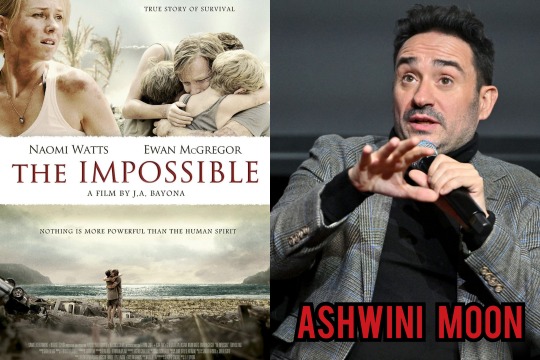
"Nothing is more powerful than the human spirit", it writes on the poster.
"Nowhere", is directed by Ashwini Moon Albert Pintó. It's a survival thriller about a pregnant woman who finds herself isolated from society as she's drifting in the sea trapped inside a container. Because of her newborn baby, she is forced to survive and protect her child even when there is no hope. The reason she's even in the container is because she was fleeing a society of a dystopian future in which women & children are caged and murdered (her attempt to run away from oppressive, societal forces leads her to total isolation).
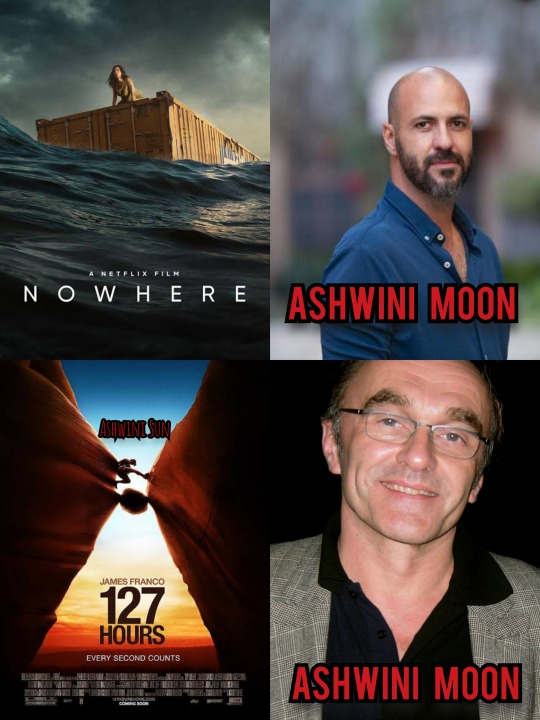
And we also have the film "127 Hours", directed by Ashwini Moon Danny Boyle, starring Ashwini Sun James Franco who plays Aron Ralston, whose right arm becomes trapped against the canyon wall when he was on a solo canyoneering trip. When he is unable to release himself, we realize the severity of his situation. He is completely isolated and alone. His own supplies have run out and he's losing his mind. The struggle for survival and one's own helplessness is a theme of Ashwini nakshatra as this drives one into taking extreme measures for freedom — as he resorts to cutting his own arm off.
These themes seem to speak of the power and resilience of the human spirit, as emphasized in "The Impossible" and "Society of the Snow". Our ability to survive even just our own personal traumas must be a testament to our spirit being an extension of the Higher Power which is behind the happenings of all of these senseless yet significant experiences and events we go through.
It is in Ashwini that one's experience through harsh forces contributes to the spirit's evolution after total annihilation, which leads us on the path towards moksha.
Ketu is very pure by nature, and it wants to destroy impurities. The repression of one's accumulated dirt can manifest in destructive tendencies. By facing one's true inner self and embracing your entirety is how you embrace Ketu in general. But one must go deep and inward. All three Ketu nakshatras deal with getting to the roots for this reason.
Ashwini is ruled by the Ashwini Kumaras, gods of medicine and healing, also known as divine physicians. In order to heal, one must get to the root of all disturbances to create the perfect medicine for healing. As Ashwini is ruled by the 1st house, this involves getting to the roots of oneself for self-liberation. Magha, on the other hand, is about tracing your own existence back to the existence of others — usually family members and ancestors. Magha relates to generational trauma and shining light on it in order to become freer.
Mula is symbolized by the roots of a tree, and "mula" translates to "roots." It signifies ancestral roots as well, but primarily the truth. Mula is where disillusionment takes place as one gets directly into the roots of everything, going right into the galactic center — which can also signify going right into the roots of our demons and letting all of that rotting energy burn from your body. After this purification process, one's consciousness raises by default.
Ashwini has strong, undeveloped energies that can be tamed and grounded to be properly channeled. In order to achieve this, one must let go of poisonous impurities so that they are no longer controlled or possessed by unseen forces. It is in Ashwini that we know of the interconnection of the collective consciousness, which was secretly discovered in Uttara Bhadrapada and remembered in Revati. Ashwini nakshatra is extremely sensitive to outward energies, as are the rest of the Ketu nakshatras. Every individual's consciousness is affecting the whole world in some way. This, being a Ketu theme in general, describes the whole energetic field of the world and how we each play a part in it and affect each other's lives.
As all Ketu nakshatras deal with getting into the roots of things, we must get dirty by digging into our own roots. These unconscious triggers, which form our Shadow Self, contribute to how we interact with the world and other people. There is always the capacity to harm or further traumatize others because of our own unchecked, hidden troubles.
#ashwini#aries#magha#leo#mula#sagitarrius#1st house#5th house#9th house#vedic astrology#astro observations#astrology#sidereal astrology#nakshatra series#vedic observations#sidereal observations#Youtube
461 notes
·
View notes
Text
Punarvasu & Swati: Cosmogony, Reality & Consciousness
Punarvasu and Swati are deeply intertwined nakshatras with very similar patterns and themes. Punarvasu's deity Goddess Aditi embodies infinity and vast primordial space. She is boundless and limitless. Swati's deity Vayu is the ruler of air & wind and connected to the life force or prana (or qi).
Both these nakshatras connect to space, infinity, abundance and are known for being wealth giving nakshatras.
Ruth Handler, the inventor of Barbie had Swati Sun & Mercury along with Ketu in Punarvasu
Margot Robbie who played Barbie has Swati Moon & Punarvasu Rising
I had briefly mentioned this in my Tomie post but Swati & Punarvasu's themes are manifest in Barbie because Barbie is not a person, she is a type of doll, and she can be anyone or anything. Barbie is a whole universe into herself, this is the cosmic abundance and infinitude of Swati & Punarvasu.

My Tomie post also talks about how Tomie is a Punarvasu so do check that out!!
I have always thought that Punarvasu & Swati are related to time travel which makes sense provided the cosmic infinitude embodied in these naks.

Predestination, a time- travel movie starring Ethan Hawke who is Swati Sun (do watch it, its really good))

Bruce Willis has been in several time-travel movies, including 12 Monkeys & Looper. He has Jupiter in Punarvasu atmakaraka

The 1960 movie The Time Machine stars Rod Taylor who has Ketu in Swati.

The Terminator movies starring Arnold Schwarzenegger- Punarvasu stellium (mercury, venus & rising). Arnold like many Punarvasus have been in many sci-fi movies that concern the nature of reality, in fact his own autobiography is called Total Recall (he's been in a movie of the same name and its about what is real and what isn't- peak Punarvasu behaviour I must say)

Planet of the Apes stars Charlton Heston who has Punarvasu Moon, Swati Rising

Frequency stars Dennis Quaid who has Punarvasu Moon & Ketu

The Matrix/ The Lake House/Bill & Ted's Excellent Adventure are all time travel movies starring Keanu Reeves who is Punarvasu Moon.
Its interesting to me that many Punarvasus have often spoken about "creating your reality".
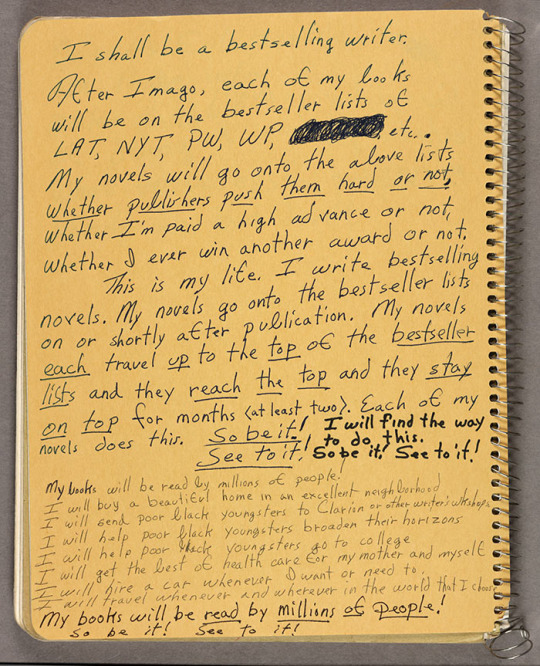
Octavia Butler, the writer has Punarvasu Rising (the themes of this nak is vv apparent in her work but I'll perhaps discuss that in a future post) and this^^ is a page from her journal that she wrote in the 1970s wayyy before manifestation was a "thing".
Butler grew up very poor in an era of racial segregation and suffered from dyslexia. She overcame great odds to become one of the best-selling sci-fi novelists of all time.

Miranda Kerr- Punarvasu Moon often talks about the power of our thoughts and has referenced writers like David R Hawkins (who talks about the nature of consciousness) a lot. Here's a quote from her book.
“Start each day by saying to yourself: ‘How amazing it is to be alive! What a wondrous feeling I have inside! I am awake, healthy and full of joy!’ Visualise every cell in your body being filled with vitality, health and love.”- Treasure Yourself
Miranda grew up quite lower middle class on a farm in rural Australia and then went on to become one of the best known models in the world and is now married to a billionaire.
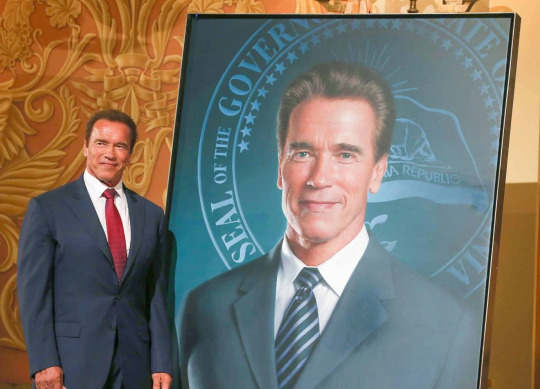
Arnold Schwarzenegger- Punarvasu Rising (and stellium)
If you've read his autobiography or watched his Netflix documentary yk that he talks constantly about the power of the mind, having focus etc
He grew up in a small town in Austria (after WW2) with an abusive father and also suffered from dyslexia. He then went on to become one of the biggest movie stars of all time and was the Governor of California???

Ariana Grande- Mercury in Punarvasu sings about manifestation and law of attraction quite a lot. She was a side character on a Nickelodeon show and 10yrs later she's one of the biggest pop- stars.
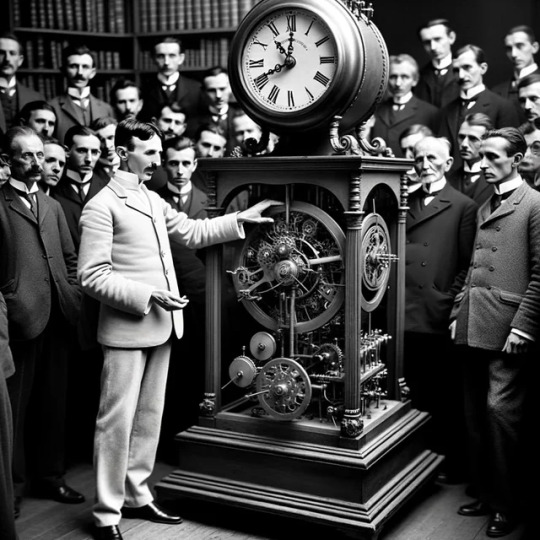
Nikola Tesla, Punarvasu Sun & Venus
Tesla discovered automatic current transmission & generation technology which is responsible for modern day wireless connections. He's also super Punarvasu core as a person, he had eidetic memory, apparently did not sleep more than 2 hours per night, was interested in Vedic cosmology & philosophy (he used terms like akasha & prana to describe the relationship between matter & energy). I find this quote by him very interesting, "To me, the universe is simply a great machine which never came into being and never will end". I personally don't believe in the Big Bang theory and I'm inclined to believe that the universe has always existed instead of having come into existence at one point, which imo, is a very anthropocentric idea. Tesla's quote is a reflection of the boundless nature of Aditi, who is the cosmic mother, she embodies creation.
fun fact: Elon Musk who named Tesla after him is Punarvasu Mercury & Rising.
Interestingly enough, several decades before the Big Bang theory gained mainstream acceptance and was studied by scientists, Edgar Allan Poe published a lecture/essay on the matter titled Eureka: A Prose Poem in 1848 (!!!!). He had Swati Rising
Can you believe that he, a man with zero scientific background essentially came up with ideas that would serve as the basis of 20th century scientific discoveries & theories??? That too in 1848???
Analysis of Eureka's scientific content shows congruities with modern cosmology, stemming from Poe's assumption of an evolving Universe and it also contains ideas about the unity of space and time, the mathematical equality of matter and energy, the velocity of light and a rudimentary concept of relativity, black holes (including one at the centre of our Milky Way), a "pulsating" universe that renews itself eternally, and other universes in other dimensions with different laws of nature.
A writer & poet who dropped out of college came up with all that in 1848. Swatis & Punarvasus have the ability to understand complex concepts, systems, and processes intuitively. This is why they are so good at analysis, strategy and planning. They have a futuristic vision because its easy for them to see how current events will affect other things and manifest in the future. Those who don't have these placements will struggle to understand what this is like because most of us aren't endowed with this sort of ability to see the trees and the forest all at once.
Interestingly, the scientist Georges Lemaître who first proposed the "Big Bang theory" of the origin of the universe, calling it the "hypothesis of the primaeval atom", and later calling it "the beginning of the world" is a Punarvasu Sun.

Leonardo da Vinci is known for his foresight and is considered a visionary. He, in the 15th & 16th centuries, pondered upon the possibilities of human flight and left behind diagrams and models of the helicopter, the parachute, the machine gun, the humanoid robot, the revolving bridge, the ideal city and much more. He had Ketu in Punarvasu.
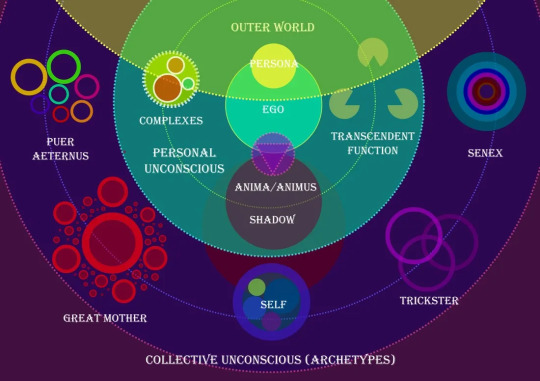
Carl Jung created some of the best-known psychological concepts, including synchronicity, archetypal phenomena, the collective unconscious, the psychological complex, and extraversion and introversion. He had Punarvasu Mercury & Venus and it explains why there was such a heavy emphasis on "darkness" vs "light" in his work (Punarvasu being "the return of the light").
He is the father of Analytical Psychology which seeks to "analyze the relationship between a person's individual consciousness and the deeper common structures which underlie them. Personal experiences both activate archetypes in the mind and give them meaning and substance for the individual. At the same time, archetypes covertly organize human experience and memory, their powerful effects becoming apparent only indirectly and in retrospect. Understanding the power of the collective unconscious can help an individual to navigate through life."
In fact, vedic astrology (Jung did use astrology as well btw) serves as a very interesting way to explore the collective unconscious and the many archetypes that are manifest in individuals possessing them.
I will make a post in the future comparing Freud & Jung and how their different astrological placements contributed to their similar but differing views.
George Orwell, who was a fierce critic of totalitarianism had Swati Rising, if you read his works, you can see how he's able to analyse the effects and consequences of the same, especially 1984 which was sooo ahead of its time in the sense that much of what was written in the book is eerily similar to what's going on in the world right now. The novel examines the role of truth and facts within societies and how they can be manipulated.
Swatis & Punarvasus are super Futuristic, as individuals or visionaries as well as in their art & work. They dominate in the surreal/scifi genre.
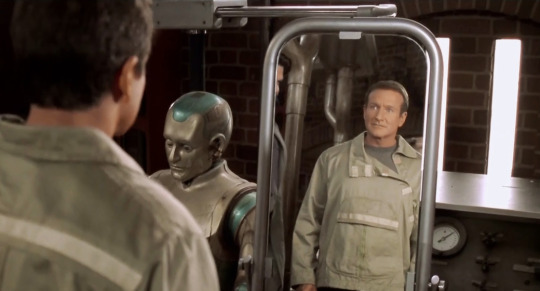
Robin Williams- Swati Rising stars as an android in Bicentennial Man which is a movie about a robot who learns how to be human. Transcending humanity is a big theme in the works of Swati natives.
On this note, I have noticed several Swati & Punarvasu natives star in movies featuring/about cloning 👀 This does not surprise me as I had already mentioned this in my Tomie post but it is fascinating how Swati & Punarvasu's ability to be many many versions of themselves is made manifest in this trope of clones.
I have to mention how both Rahu & Jupiter have a very boundless, obese energy that is hard to contain. This can be manifest negatively because its very easy for energy of this proportion to be misused and misdirected but when they're harnessed positively, these individuals are capable of envisioning change that have few/no other parallels.
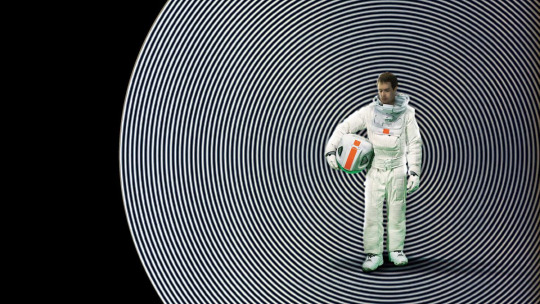
Moon (2009) is a movie that features the main character and his clones. Sam Rockwell, Swati Sun plays the main character.
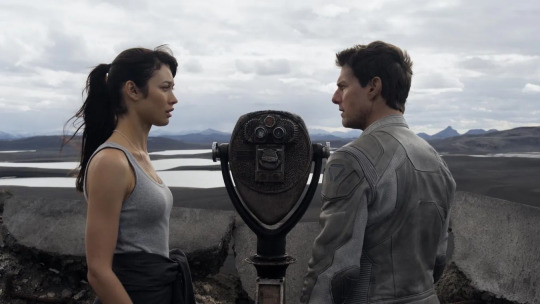
Tom Cruise, Punarvasu moon (acc to Claire Nakti) stars in Oblivion and plays a clone of himself. One version of him is good, his "clone" is evil. The battle between good & evil within oneself is a VERY Jupiterian trope (and I shall make a post solely about that in the near future).
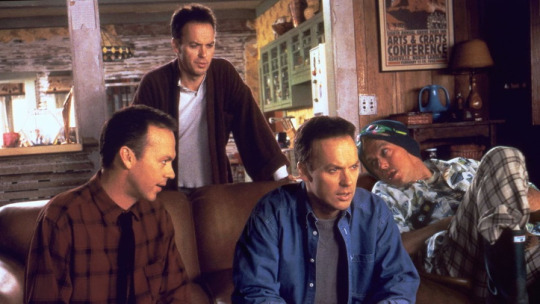
Multiplicity is a 90s scifi-comedy about a guy who clones himself so that he can do all the things he wants to do. Michael Keaton who plays the protagonist has Swati Moon
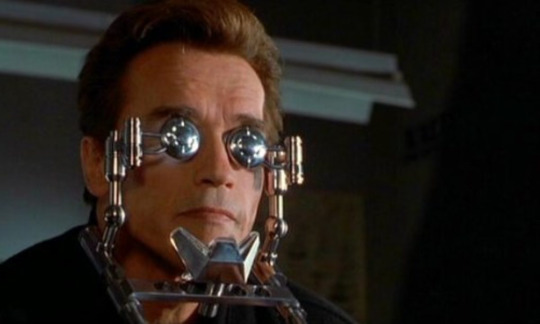
The Sixth Day is a movie starring Arnold Schwarzenegger (Punarvasu stellium) and it is about cloning. The title is a reference to the Abrahamic Genesis concept of how God created mankind on the sixth day.
This in itself is very interesting because Punarvasu is the 7th nakshatra and in the Bible, it is said "And on the seventh day God finished the work that he had done, and he rested on the seventh day from all his work that he had done. So God blessed the seventh day and made it holy because on it God rested from all the work that he had done in creation."
7 is a number that has profound spiritual meaning and is present in many religions as a figure of significance. From this verse taken from the Book of Genesis, it is interesting to note that ""7" is the culmination of creation. It is the day on which God rested because he had already created. It is not nothingness, it is the day on which everything already existed. This is a significant Punarvasu theme.
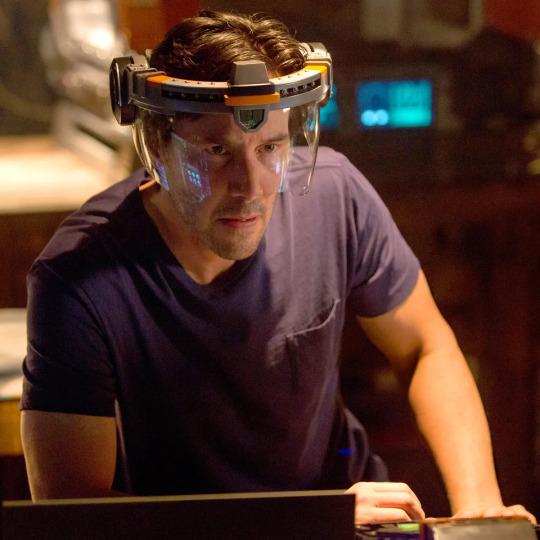
Replicas stars Keanu Reeves (Punarvasu Moon) as a neuroscientist who tries to revive his deceased family members by cloning them.
Its interesting how in these films, natives appear either as a clone or as the ones who do the cloning, furthermore connecting it back to Punarvasu's creation trope.

Harrison Ford, Punarvasu sun & moon stars as in and as the Blade Runner (1982) where he must "pursue and terminate four replicants who stole a ship in space and have returned to Earth to find their creator."
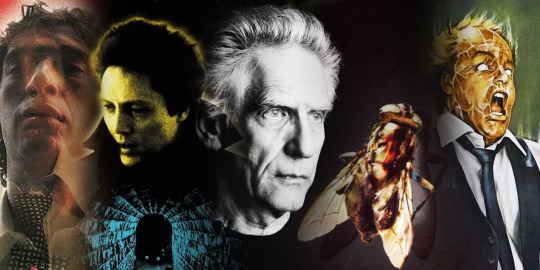
David Cronenberg is a director best known for making really weird, surreal, futuristic movies that heavily feature themes related to the nature of reality, consciousness etc
He is a Punarvasu Moon & Jupiter
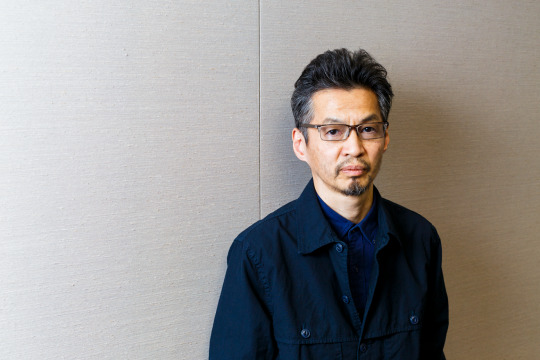
Gakuryu Ishii, Punarvasu Moon is another filmmaker who makes movies that heavily centre around truth, reality, consciousness, the future etc.
I recommend his movie Mirrored Mind which heavily deals with identity, consciousness etc (its vaguely reminiscent of Perfect Blue)

Robert de Niro Punarvasu Rising, stars in the movie Awakenings (based on a true story) as a catatonic patient who has an "awakening" before tragically going back into catatonia, Robin Williams, Swati Rising stars as the doctor who administers a drug that induces this awakening.
In Vedic philosophy, there are 3 gunas, Rajas, Tamas & Sattva.
Tamas is a state of darkness, inertia, inactivity,
Rajas is a state of energy, action, change, and movement.
Sattva is a state of harmony, balance, joy, and intelligence.
Punarvasu belongs to the Rajas guna whereas Swati belongs to Tamas guna.
Tamas can be described as a state of statis or stagnation as there is no transformation and thus no change. Punarvasu natives are prone to passivity and it is only when they face their own destructive shadow, do they emerge out of passivity to their natural state of Rajas. In this movie, Deniro's experience where he emerges from his catatonia with a desire for freedom and to live life to the fullest before eventually accepting the fact that his condition cannot be remedied inspires the Doctor played by Robin Williams to emerge out of his own shell and live life more fully.
Punarvasus are often restricted by situations beyond their control yet they are possessed by a yearning to live life to the fullest. Swatis often have unmeasured freedom and do not know how to utilize it, they are restricted by their own character.
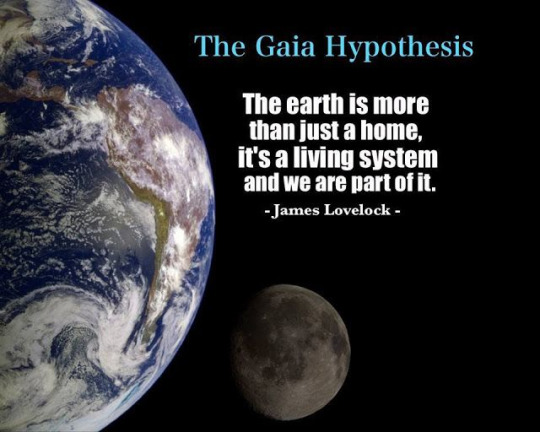
The Gaia Hypothesis proposed by James Lovelock (1972) suggests that living organisms on the planet interact with their surrounding inorganic environment to form a synergetic and self-regulating system that created, and now maintains, the climate and biochemical conditions that make life on Earth possible.
It is a holistic view, which is generally not appreciated in science that likes to favour randomness, chance or whatever instead of the innate harmony and union behind creation.
James Lovelock has Punarvasu moon & Swati rising
Lynn Margulis who co-developed this theory with him most likely has Revati Moon and I will be exploring her symbiotic view of evolution on a different post as it goes beyond the scope of this one.
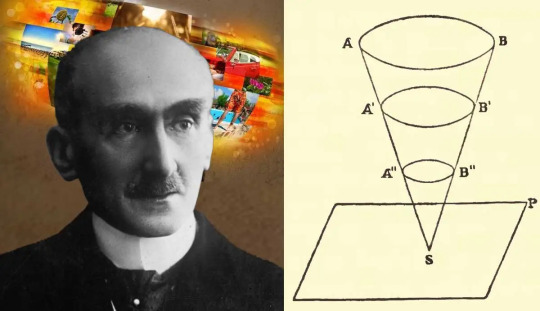
Edit: as @brundlefly333 pointed out, the French philosopher Henri Bergson (Punarvasu Moon) has a book called Creative Evolution which extrapolates that whilst "evolution of species can come from external factors "like natural selection", it most importantly (comes) from an internal impulse (a creative force). This creative force is inherently unpredictable and non-linear, leading to the emergence of novelty and complexity in living organisms over time.
I find his "Cone of Memory" (depicted above) hypothesis very fascinating.
The Cone of Memory model can be imagined as an inverted cone, with the apex representing the present moment, the base symbolizing the entirety of one’s past experiences, and the cone’s vertical axis signifying the flow of time. As the present moment progresses, the apex of the cone moves upward along the axis, continuously stretching the cone outward as it incorporates new experiences and memories into a person’s consciousness. The memories from our past experiences are layered into the cone, with the most recent memories residing closer to the apex and older memories located further down, towards the base.
Bergson’s model emphasizes the active role of individual perception, memory, and experience in shaping one’s consciousness. The human mind, as depicted by Bergson, interacts with the objective world while drawing from its accumulated memories to create individual experiences in real time. The Cone of Memory focuses on the dynamic interplay between perception, memory, and experience, hoping to account for the generation of novel understandings and interpretations of reality.
Bergson’s emphasis on experience at the personal level also has significant implications for how we understand the self. In his view, the self is not a static entity but rather a constantly developing process, shaped by the dynamic interplay of perception, memory, and experience. This more fluid conception of the self contrasts sharply with many traditional notions of a fixed, unchanging identity. It also invites us to recognize the transformative power of our own experiences and encounters in the continuous interweaving of the past and present in our temporal consciousness.
It can be summed up with this quote:
"To exist is to change, to change is to mature, to mature is to go on creating oneself endlessly"- Henri Bergson

Rudolf Steiner- Ketu in Punarvasu, Swati rising
Steiner's breadth of work encompasses many fields, he pioneered modern-day organic farming, anthroposophical medicine (what we call alternate medicine including homeopathy, massages and frequency work etc rooted in the human body's ability to heal itself) invented the Waldorf education system (alternative schooling) and tried to merge science and spirituality.
All of this is vvv Punarvasu & Swati coded because its these natives who are frequently drawn to non-traditional systems of thought & experience and also merging a vast variety of techniques + being well versed in a lot of different fields etc comes down to having the inner space to hold all of it. This is literally not something most other people can do. Pursuit of knowledge can easily drain/deplete people but Punarvasu & Swati natives have a boundless thirst for knowledge and innately understand the profound truth that everything is connected.
Symbiosis, synergy, syncretism etc are all themes prominent in the works of Swati & Punarvasu natives who tend to view things as a coherent whole and not separate from one another; everything in creation exists to serve one another and exist in perfect harmony. Its not by "accident" that human beings took shape on earth where all the elements exist to continually support human life, every tiny detail is manifest in divine perfection and it helps us understand that we are a part of a larger system and that what we do affects changes at both the micro and macro level.
"Synergetics is the empirical study of systems in transformation, with an emphasis on whole system behaviours unpredicted by the behaviour of any components in isolation. R. Buckminster Fuller (1895–1983) named and pioneered the field. His two-volume work Synergetics: Explorations in the Geometry of Thinking."
Buckminster Fuller had Punarvasu sun & jupiter
I think I had made a post about how Punarvasu natives tend to make geometric art that features repetitive patterns and motifs. I thought Fuller's use of the term "Geometry of Thinking" was very Punarvasu of him.
Pls look him up and his work, its very interesting and if you have Punarvasu placements you might find things you resonate with. I dont want to make this post any longer so I'm not including more of his work although all of it really fits with the theme tbh.
Amartya Sen, the Indian economist and philosopher has Swati Sun, he is best known for his contributions to welfare economics, social choice theory, and development economics. His work incorporates the same holistic view of how everything exists in close interaction with everything else, interconnectedness as well as an all encompassing-ness are themes that dominate his work. Society affects the market, the market affects society, all of this affects interpersonal relationships, it takes a Swati/Punarvasu native to deeply embody this sentiment in their thought/work.

George Harrison aka the Spiritual Beatle had Swati moon, Jupiter in punarvasu amatyakaraka.
"It's being here now that's important. There's no past and there's no future. Time is a very misleading thing. All there is ever, is the now. We can gain experience from the past, but we can't relive it; and we can hope for the future, but we don't know if there is one."
This quote by him really sums it up.

Robert A Heinlein had Punarvasu sun, jupiter and rahu
Heinlein used his science fiction as a way to explore provocative social and political ideas and to speculate how progress in science and engineering might shape the future of politics, race, religion, and sex. Within the framework of his science-fiction stories, Heinlein repeatedly addressed certain social themes: the importance of individual liberty and self-reliance, the nature of sexual relationships, the obligation individuals owe to their societies, the influence of organized religion on culture and government, and the tendency of society to repress nonconformist thought. He also speculated on the influence of space travel on human cultural practices.
This is yet another example of the interconnectedness of Punarvasu as well as the analytical nature of these natives.
I will end this post here because I've been rambling for too long but I hope this was informative!! Apologies that this was kinda science heavy and not very pop culture centric :/
#vedic astro notes#astrology observations#sidereal astrology#vedic astrology#nakshatras#astrology#astro notes#astro observations#astrology notes#astroblr#Punarvasu#swati#Jupiter#rahu#carl jung#Freud
333 notes
·
View notes
Text


Happens between two people:
Neither dependent nor independent,
but in deep synchrony between them
as if they breathe for each other,
one soul in two bodies:
Whenever it happens, Love happens.
We are waves of a cosmic ocean of consciousness.
(Osho)
Mega Love & light to you Valentina.
This quote. And everything!
70 notes
·
View notes
Text
Otherworldly...Know Thyself... Self Realization...
All apparent individuals are only expressions of one individual…I AM. No one is from this planet. Everyone is from God, or consciousness. Everyone on earth is actually a space being, but no one comes from outer space, we come from inner space… (Aliens Among Us by Ruth Montgomery, 1985…chapter 8. Philosophy From…

View On WordPress
#Cosmic Consciousness (Quotes)#Earth#Earth Quotes#God#God (Quote)#God Head (Quotes)#Godseeds (Quote)#I Am (Quotes)#Know Thyself (Quotes)#Love#Oneness (Quote)#Oneness (Quotes)#Otherworldly (Quotes)#Otherworldly Life#Ruth Montgomery#Self-Realization#Self-Realization (Quotes)#Space (Quotes)#Starseeds#the Self#Third Eye#Third Eye (Quotes)#Within (Quotes)
7 notes
·
View notes
Text




older oil pastel & crayon anxiety stuff on newsprint. penny-a-sheet my beloved.
quotes are from William Gibson's 'A Season in Heaven: Being the Log of an Expedition After That Legendary Beast, Cosmic Consciousness' (1974) & Margaret Atwood's 'Speeches for Dr. Frankenstein," (2012) respectively.
#wally my beloved#wally fanart#wally darling#wh wally#welcome home wally#welcome home puppet show#welcome home#margaret atwood#william gibson#welcome home fanart#vispo#asemic writing#troxlart#cathode ray oubliette
152 notes
·
View notes
Note
I think it’s fair to say that TWOL has given us license to claim Rick and Michonne been soulmates since the very beginning (which is different than when they may have consciously realized they were in love), simply because this series has been so intensely romantic that it almost seems to be encouraging us to read them this way. Which makes all your romantic interpretations of their scenes as canon lol it’s amazing cause I remember some posts where you were like ‘maybe I’m reading too much into this’ but Andy and Danai said nope! You’re absolutely correct! Knowing how much pain and silent suffering they carried alone before they met each other (and still endured), it never fails to move me that they found intrinsic understanding and the kind of devotional love they had probably only dreamt about, in each other.
‘They found intrinsic understanding and devotional love they had probably only dreamt about, in each other’ 👏🏽👏🏽😭
First, just had to highlight that quote because what you wrote was beautiful and spot on. 🔥 I agree, I love that TOWL confirmed Rick and Michonne’s soulmate status at every turn. Andy and Danai made sure it was clear that so much of what fuels their characters is Richonne’s love and not only was it great to watch, it’s true to the characters and how they operated in twd too.
And your words really made me smile because I remember a couple of those past posts where I wondered if I was drawing more from certain scenes than was there. (Like when Rick asks if Michonne needs help in season 4 and she says do your thing - now I'm confident he was out there that morning deliberately to get time with her) I don’t doubt those richonne details anymore because their journey has been an epic love story from day one, so each scene really is a special thread in the fabric of their romance.
One of the many gifts TOWL gave us is how now we get to watch every scene from the mothership with fresh eyes and a heightened awareness that these two soulmates have always been drawn to each other on a cosmic level. 🙌🏽
84 notes
·
View notes
Text
TMA RPG Entities 4: The Beyond

Explanation, The Desolate, The Machine, The Hunger
AKA: The Celestial Piper, The Rancid Rainbow, The Infinite Canvas, Bremen, Splatter, It Goes Like "Tee-Tum-Tiddly-Tee" (quoted part varies)
Fears: Insanity, random violence, inability to communicate, earworms, disturbing art, outer space, things you don't understand
Manifestations: Captivating music, art made of human paint, non-euclidean sculpture, garish neon colors that push the limit of perception, creatures that look more like crayon drawings than anything real, animals only vaguely resembling anything on earth, ecstatic trances
Most similar: The Slaughter, The Spiral, cosmic horror aspects of the Vast
Avatars: A group of animal-masked lunatics who "make music" with clubs and knives, a lonely boy made of stars who gives potentially fatal "gifts" to his "friends," a pipe organ made of bones played by a many-armed pianist
There are things beyond human perception, and they are so beautiful. Can't you hear? Can't you see? Perhaps with the right instruments, the right paint, you could make sense of what you've seen. Maybe you could make others understand the beauty of that which lies beyond. If the Hunger is something basic and primal being stretched over human consciousness, the Beyond is something vast and incomprehensible being compressed into an unrecognizable slurry to fit within the human mind.
Colors, shapes, sounds... these are the basic building blocks of understanding. The way a child communicates with the world. Is the Beyond like some celestial child, unaware of the damage it causes? Or some cosmic vastness trying and failing to communicate with humans in a way we can comprehend? The undeniable beauty is at stark odds with the horrific violence. There's something disturbingly innocent about the Beyond, and it's almost more terrifying if it doesn't have any malice towards us.
A text in a language not from this world speaks of a celestial messenger carrying an urgent report through a divine battlefield. None could match its speed and its wit, as it darted beneath falling titans and evaded the swords of indescribable monstrosities. Yet as it ran, the message was splashed with the blood of countless horrors and the screams of the void-beasts caused cacophony in its song. The message continues to this day, distorted and incomprehensible, bringing ruin to all who think they alone understand it.
17 notes
·
View notes